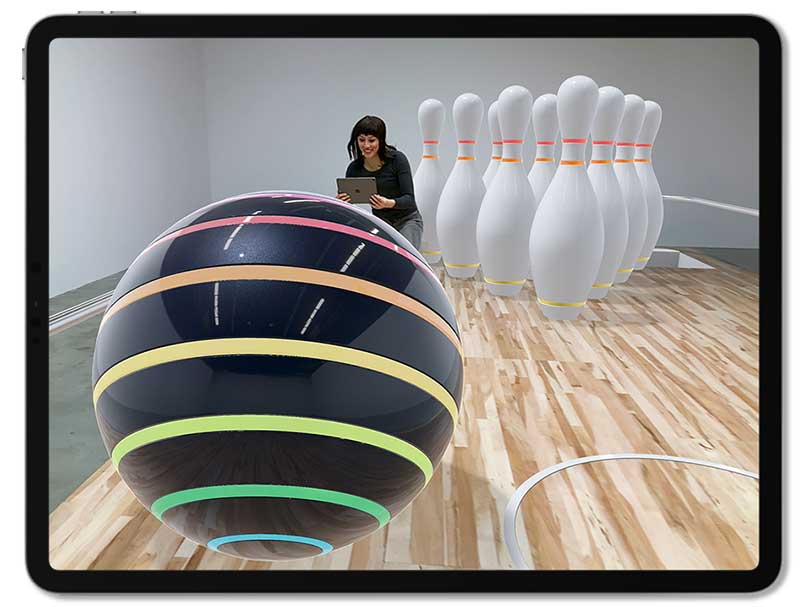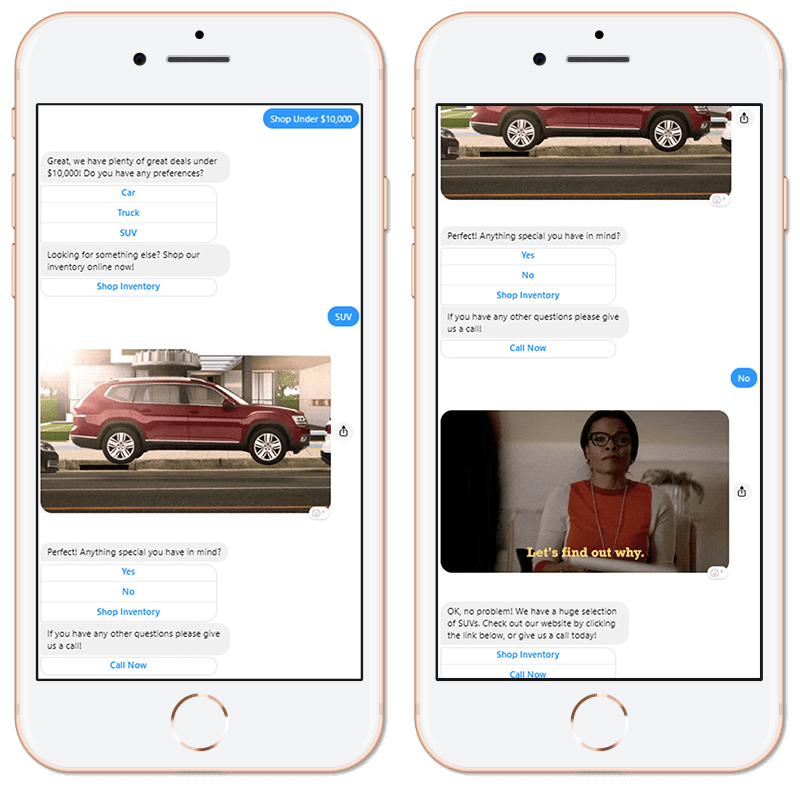The digital marketing industry is always changing. If you are not current with those changes, you could lose out on improving the reach of your dealership.
Optimize your digital marketing strategy for the upcoming year by transforming the way you connect with current and new customers.
Connect More Effectively with Today’s Consumer
According to research completed by Think with Google, 92% of auto consumers research dealerships and vehicles online before visiting the showroom. Much of the online research is watching videos about cars, their features, and benefits.
You can connect more effectively with today’s tech-savvy consumer by adjusting your digital marketing strategy to meet the new shopping demands. Don’t lose your edge over your competition by failing to understand these new marketing trends.
Automotive Marketing Trends for 2020
Now is the time to start planning your digital marketing strategy for 2020. Incorporate the following five automotive marketing trends to increase traffic to your dealership and boost sales:
- Voice Search
- AR and VR Technology
- Messaging Apps
- Artificial Intelligence
- Google E-A-T Guidelines
Optimize for Voice Search
When Google Home was introduced in 2016, CEO Sundar Pichai shared that 20% of online queries through their mobile app were done by voice search.
Approximately 111.8 million people use voice search at least once a month, and that number is estimated to increase to 122.7 million by 2021.
If your dealership is not strategizing today how to optimize for voice search, then you could be missing out on increased traffic to your website and showroom.
You need to integrate an omnichannel approach that optimizes all online content, such as your website, blog, and paid search ads for voice search.
If you don’t optimize that content for voice search, it will not receive a high Needs Met (NM) rating from the Google algorithm.
That can negatively impact your search engine results page (SERP) ranking. If your competition has effectively optimized their online content for voice search, they will get new customers and you’ll lose out.
Typically, when someone completes a typed query online, they use a lot of words. For voice search, the user is speaking with a conversational tone and will likely ask Google a direct question about where to find the ideal dealership for them.
Optimize your content for voice search by implementing the following:
- Long Tail Keywords – Make sure these keywords match up to informal speech. For example, instead of using “Ford car dealership South Philadelphia” you should use “best Ford dealerships near me”.
- Answer Questions – Optimize online content to answer common questions consumers ask about vehicles and car dealerships to increase the chances of your website showing up in the results.
Use online tools like Answer the Public to identify common questions auto consumers have been searching for online. Get a free report to help optimize your content creation process.
Use Cutting Edge AR and VR Technology
Apple launched ARKit in 2017, and now the ARKit 3 is augmenting reality for millions of users on iOS. Google launched its ARCore platform in 2017.

The worldwide market for augmented reality (AR) and virtual reality (VR) is currently at 16.8 billion and is projected to jump to 160 billion by 2023.
Your dealership should consider integrating AR and VR technology to market your dealership and vehicles to stay current with 2020 automotive marketing trends.
Consider the following examples of how your dealership can use AR and VR technology to connect more powerfully with today’s consumers:
- 3D Models – Enhance the customer experience by using AR so the people can visualize how your latest model rollout will look in their driveway.
- Virtual Tours – Give consumers a detailed 360-degree view of the interior of that vehicle they’ve been dying to test drive before visiting the showroom.
- Enhanced UX – Improve the user experience (UX) by integrating AR on your website, blog, banner ads, and ads on social media by simply tapping a link.
- Virtual Technicians – Provide customers with added benefits like virtual technicians to help them with basic service to their vehicles.
- Customization – Use AR to help customers visualize changes to vehicles better by augmenting vehicle finishes or colors.
By incorporating this 2020 trend of AR and VR into your marketing strategy, you can increase your conversion rate and boost sales at your dealership.
Communicating Through Messaging Apps
The top messaging apps include WhatsApp at 1.6 billion monthly users, Facebook Messenger at 1.3 billion, and Snapchat at 294 million. As you continue to plan your marketing strategy for 2020, consider communicating with your customers through messaging apps.

Help your dealership stand out from the competition by focusing on messaging apps rather than the more traditional communication route of emails. Just remember that communicating with customers through messaging apps must meet GDPR compliance.
Consider the following reasons why messaging apps are a 2020 marketing trend:
- Better User Experience – 20 million businesses, including Wells Fargo, Lowe’s, and Apple, use Facebook Messenger to communicate with customers because their customers like this form of communication better than emails.
- Enhanced Flexibility – Your dealership can benefit from more flexibility in communicating with customers after hours when they use chatbots.
- Improved Relationships – Messaging apps enable your sales and service team to cultivate improved customer relationships.
- Service Appointments – Messaging apps or chatbots can enhance the way customers schedule service appointments with your service department.
Use Artificial Intelligence for Personalization
Get ready to boost sales for your dealership in 2020 by using artificial intelligence for enhanced customer personalization. Today’s consumer wants a personalized experience through all their digital touchpoints with your dealership.
There is a fine line between building a good customer relationship and making sure your data amalgamation is accurate, and not unnerving your customers with too much personalization.
The following tips can help you find that balance when using AI for personalization:
- Don’t Cross the Line – Use AI to share just the right amount of personalization so that the customer feels that you know them, without scaring them away by sharing too much of their amalgamated data.
- First Impression – Balance lead insights with tailored information that the customer wants, like vehicle color or trim preferences or prices. You only get one chance to make a great first impression with your leads.
- Automation – Automation can deliver invaluable information about exclusive sales and new vehicle rollouts through the website, email, and messaging.
- Track Results – Track data efficiently to ensure that your personalization efforts are meeting key performance indicators (KPI) and increasing ROI.
Enhance Your Compliance with E-A-T
- On August 1, 2019, the webmasters at Google released a blog post about Google’s core updates. When you’re planning your 2020 digital marketing strategy, make sure you focus on enhancing your compliance with Google’s E-A-T content quality guidelines.
- Google’s algorithm rewards educational and relevant content that meets the needs of users’ online searches and provides a superior user experience.
Make sure your online content complies with the E-A-T guidelines:
- Expertise – Content showing expert knowledge that brings value to readers.
- Authoritativeness – Content that portrays you as an authority in the industry.
- Trustworthiness – Trustworthy content shared on a secure site.
Your dealership can showcase its expertise by sharing expert knowledge about vehicles and services by sharing facts, statistics, and content from industry leaders.
Showcase your authority in the industry by publishing content on your website and blog written by individuals with credentials, and by sharing customer testimonials.
Make sure your site is trustworthy by always providing relevant content and a user-friendly website experience. Make site security an important factor—especially if your customers can log on to any portion of your site and input personal data.
- You can visit Google’s blog post to read questions that they suggest webmasters ask themselves when trying to create E-A-T- compliant content. Some of those questions include the following:
- Are you writing engaging headlines that summarize the content?
- Would you bookmark the page or share it with a friend?
- Are you writing content that’s worthy of being referenced by other sites?
- Does the content contain facts that can be verified easily?
- Are you writing user-friendly content that’s error-free?
- Do readers gain valuable information compared to competitors’ sites?
Dive deeper into what Google is looking for regarding E-A-T content by reading their Search Quality Rater Guidelines. Their algorithm provides results for users who are searching for online content.
However, they use global search quality raters to ascertain if the algorithm is providing relevant content. These raters enable Google to identify whether their core updates are consistently working well and providing users with relevant content.
The search quality raters have no impact on how well your online content ranks on search engine results pages. Google does not use that data in its SERP algorithm.
Their job is only to deliver feedback on whether Google’s system is working.
Boost Sales with These 2020 Marketing Trends
Take your dealership to the next level and get ready to boost sales in the upcoming year by integrating these top five 2020 automotive marketing trends into your digital marketing strategy.
Stay ahead of the competition and optimize your online content for voice search. Use AR and VR technology to enhance customer experience and lengthen their lifecycle with your dealership.
Communicate with customers through messaging apps and use artificial intelligence for a unique, personalized experience. Create content that meets Google’s E-A-T Guidelines.
Contact the professional team at J&L Marketing to get started today with your 2020 marketing vision.



